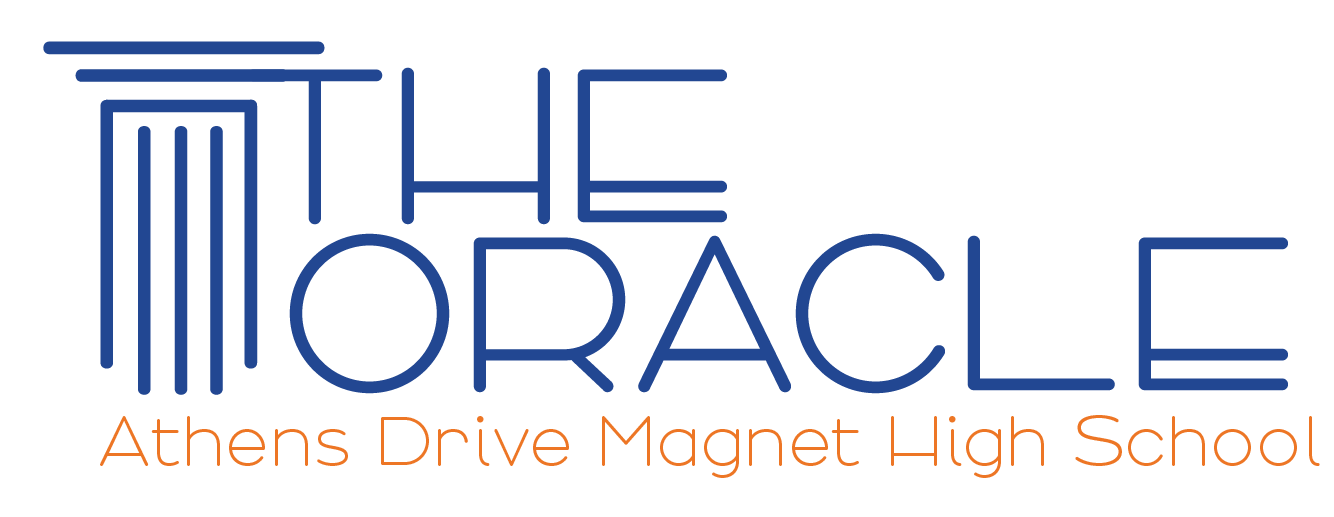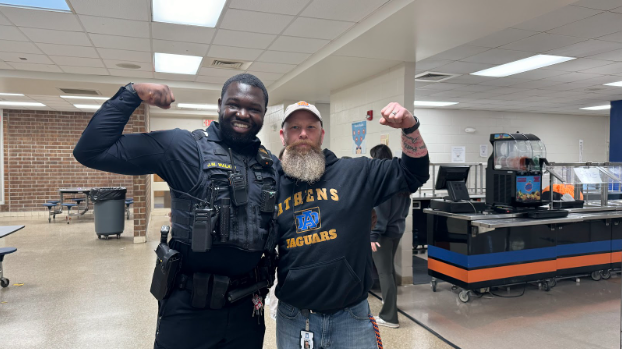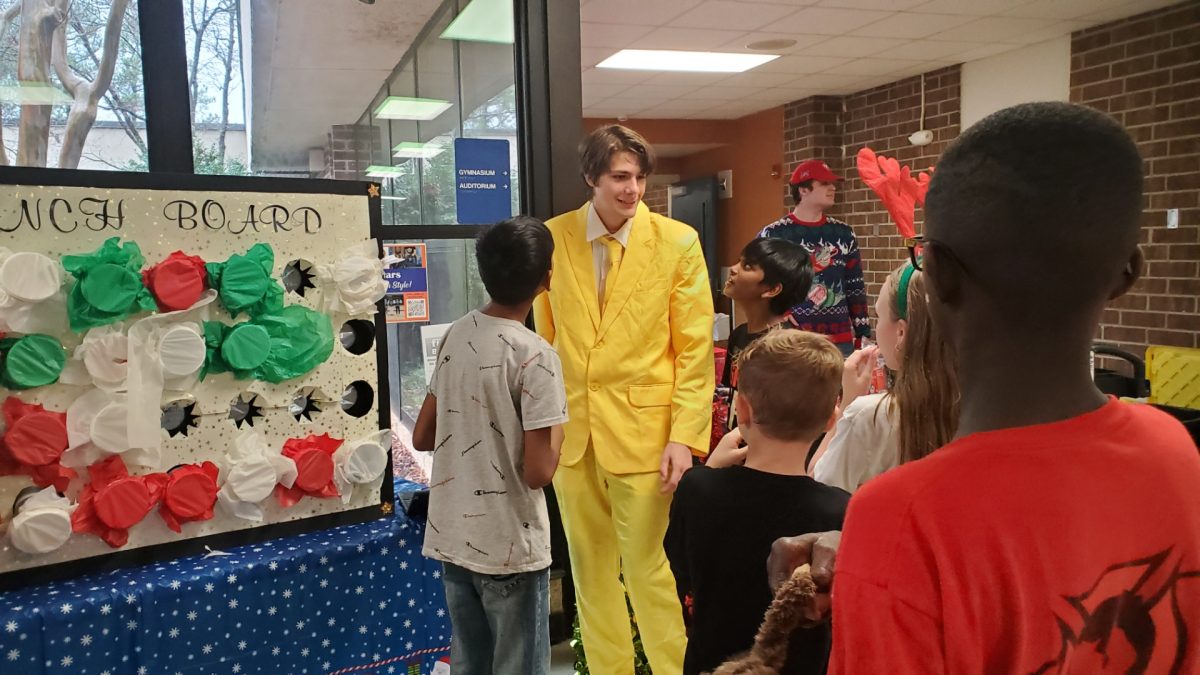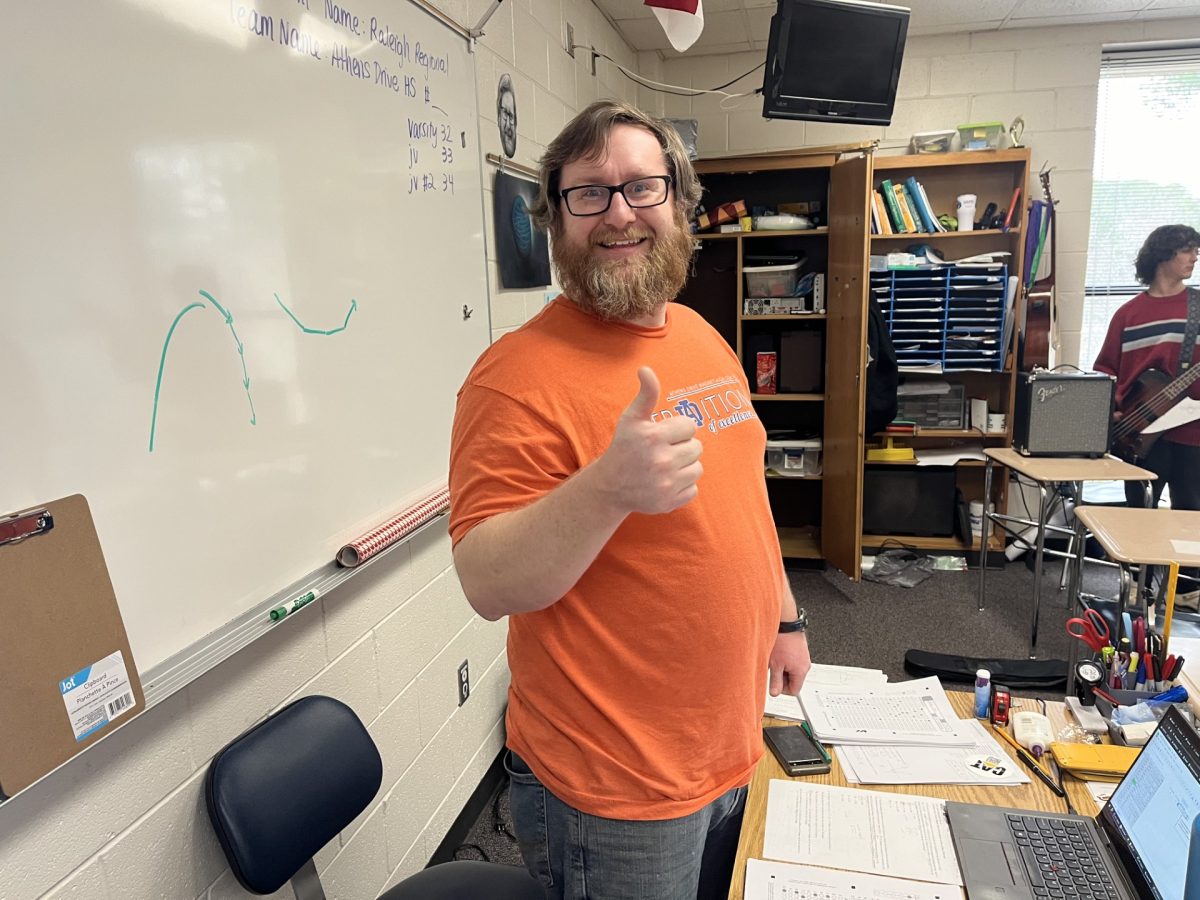By: Zoë King
One of the most important decisions the students of Athens Drive have had to make as of March 22 was deciding whether or not to return to in-person learning. While the idea of returning to school is appealing to many, the risk to one’s health and the health of one’s family can be an effective deterrent. Students are not the only ones making these difficult decisions, so are the teachers. While many are returning to school, some have chosen to remain at home.
Kristen Worrell, a health science teacher, is teaching in-person. Jessica Crooks, World History and AP Psychology teacher, has been approved to teach from home. As Wake County moves forward with in-person learning, hearing their perspective on the state of in-person versus online learning can give students walking the line a better idea of how to go forward.
One of the biggest issues when discussing online versus in-person learning is COVID-19 safety. While strict protocols to prevent the spread of the virus may be in place, it is no secret that some people are not obliged to follow them. Even the most basic of precautions, wearing a mask, is far from a universal agreement. Over 20% of Americans do not always wear a mask when going out in public, and the number of Americans who have been following social distancing guidelines has been steadily decreasing since the beginning of the pandemic.
When asked about how well Athens students are following the guidelines, Worrell said, “For the most part I think that students are doing a great job abiding by the guidelines. I think everyone is realizing these are the things that need to be done to return back to a new ‘normal’.”
Concerning the guidelines themselves, many have raised questions as to whether they are effective enough. Even though she is currently teaching at home, Crooks disagrees. Regarding the guidelines, Crooks said, “Although I’m not at school to witness it, I believe that Mr. Mares does everything he can to make school a safe and positive environment for students and staff. Given the circumstances, facilities, and resources, I do believe everyone is doing the best they can to prevent the spread of COVID – 19.”
“Teachers had to apply for accommodations to teach from home at the beginning of this school year. To make this decision to apply, Crooks said, “I think that everyone should do what is best for themselves and their families (and it’s great that WCPSS has given students/parents that option).”
Despite the potential COVID-19 fears, in-person learning still seems to be attractive to the interviewed teachers. When asked what they missed the most about being in-person, both teachers were in agreement: the students.
Without seeing students’ faces, it’s hard to know if my students are engaged and grasping the material.
— Jessica Crooks
Worrell said, “I feed off the energy of kids being in class and building those relationships in-person. It’s hard doing that over silent, initial screens.”
The teachers seemed to have two major issues with not seeing their students: engagement and relationship building.
Regarding engagement, Crooks said, “It is incredibly hard not seeing student’s faces from a teaching perspective, because, normally, I can look around the classroom at students’ faces to gauge their understanding of the material and adjust my teaching as needed. Without seeing students’ faces, it’s hard to know if my students are engaged and grasping the material.”
As for Worrell, tacking on the fact that she has to juggle the virtual and in-person students makes it even more difficult.
“It has been challenging for sure! The hardest part, for me, is making sure that all students are getting the attention they need (like not putting more focus on those in-person vs. those virtually since they are sitting right in front of me),” said Worrell.
For Worrell, there is also the added issue that many of the topics and skills she teaches for the Health Science Academy are taught practically.
“For our Health Science classes there are a lot of skills being taught that are difficult or impossible to truly learn online such as learning to take blood pressure or learning CPR. We had to rely on videos which is a mediocre substitute, at best. I also can’t really do any of the labs normally done in Pharmacy Tech,” said Worrell.
From a more emotional perspective, the teachers believe that online learning has also gotten in the way of teachers’ ability to build relationships with their students.
Crooks said, “It’s also hard from a social/emotional standpoint because teaching isn’t just about covering the material, it’s about forming relationships with students. A college professor of mine would always tell us, ‘you can’t teach them if you can’t reach them.’ And with virtual learning, it’s 10x harder to connect with students and socialize without seeing their faces.”
As with every dilemma, there are pros to both sides, and even online learning has its perks. Worrell said the best thing about online learning that was not health related was, “Learning how to be more creative with assignments on the computer and thinking outside of the box with teaching.”
Crooks seemed to be in agreement. “Not related to COVID – An upside to online learning is that it has forced teachers to become more tech-savvy and update their teaching methods. I like how organized google classroom is and how it is much easier for students to stay organized and know what assignments are due and when they are due,” said Crooks.
I am really impressed with my students and how they have handled online/in-person learning and their flexibility with all the changes that are occurring,
— Kristen Worrell
Beyond the aforementioned upsides, there are a few other benefits to online learning. Crooks was pleased about the lack of a commute, and Worrell enjoyed the flexibility of the schedule.
Crooks also spoke on student conduct. “Another would be that I don’t have any discipline or behavior management issues,” she said “My students get along with one another very well in a virtual classroom.”
While students’ behavior in the online classroom has improved, the teachers agreed that student productivity had not. Crooks’ biggest concern seemed to be during class time.
“The biggest challenge in online learning is that students are understandably distracted. They are distracted by social media, their phones, things going on in their homes, and all these things are easily accessible to them at any time of the day. Whereas at school, they were more inclined to focus solely on class. I also think some students are struggling with technology at home, life faulty devices or WIFI,” Crooks said.
While Worrell also had issues with student productivity, like Crooks, she is not truly upset with them over it.
“Even though I get frustrated at the lack of engagement and dismissing deadlines, I am really impressed with my students and how they have handled online/in-person learning and their flexibility with all the changes that are occurring,” she said. “I am really fortunate that my kids still come to class daily and that they are still putting forth a lot of effort in their learning. They have four different teachers using different learning platforms and varying online expectations which is a lot to manage. I am proud of all the kids for hanging in there and surviving the last year and a half the best that they could.”
Despite the many components of the switch to consider, the NC School Board has made their decision: students can choose to be back in-person full time now from elementary to high school. For some teachers, including Crooks, this sounds like good news.
Regarding this change, she said, “I think that combining cohorts is a good idea IF social distancing can still be maintained. If there were a large number of my students at school, I would feel more inclined to be in-person with my students.”
On the topic of younger students, Worrell said, “I have two kids that are middle-school aged and have been totally fine with them returning to school. Part of that comfort is knowing that there are fewer students that are live, in-person with them¹. I think it’s also very important for elementary-aged kids to return but don’t envy the challenges that those staff face with social distancing and COVID guidelines with the little ones.”
When it comes to online versus in-person learning, both Worrell and Crooks seem to be confident in what is to come. Despite believing in-person learning is better for students’ ability to learn, as long as COVID-19 remains a valid threat, a universal push to go back into the building seems highly unlikely. Going forward, students and teachers can only hope that online learning is able to improve, or that this will be over by the time the next school year rolls around.







